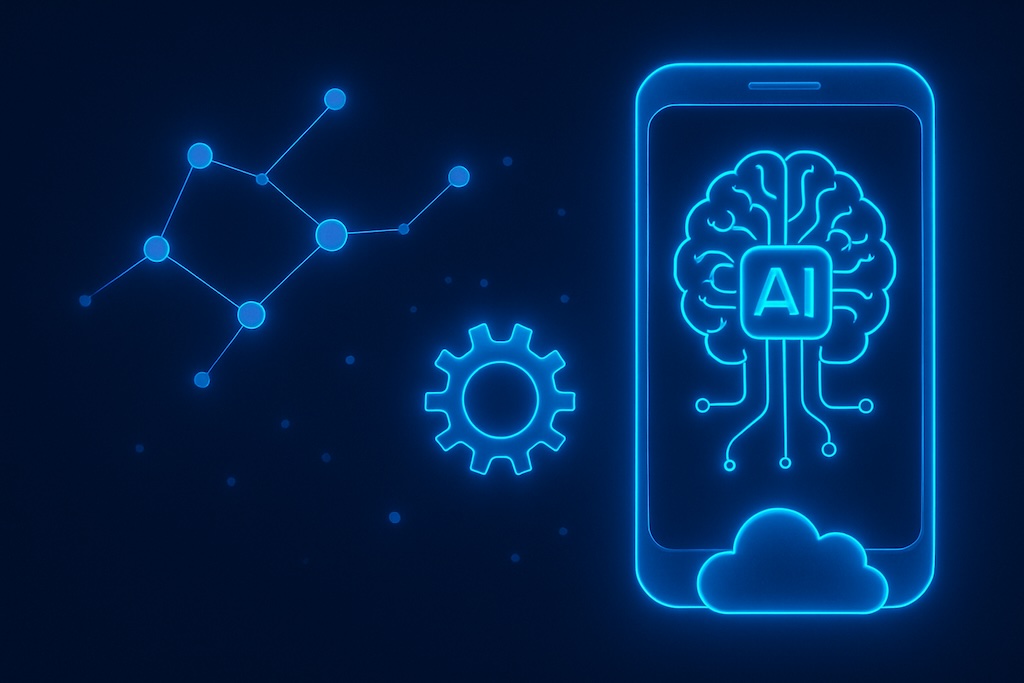Not long ago, a chatbot or a recommendation engine was enough to say your app had “AI.” I really believe those days are behind us. In 2025, we’re stepping into something bigger: AI-native mobile apps. And I am not talking about apps with just a bit of AI sprinkled on top but apps that are built from the ground up around it.
As a Principal Mobile Engineer who’s spent years helping brands like E.ON Energy and Formula 1 design mobile experiences, I can feel the shift. It’s not just about adding a smart layer at the end. AI is starting to shape the very bones of how we build, from the way users interact with the app to how the backend moves data around behind the scenes. And with Apple doubling down on Core ML, Neural Engines, and private, on-device inference, the standard is getting higher for all of us.
What makes an app truly AI-Native?
When we talk about AI-native, we’re not just thinking about a chatbot on a screen or suggesting playlists. An AI-native app:
- Relies on machine learning models to power core features.
- Adapts its behavior based on real-time user signals.
- Runs AI locally for speed, privacy, and offline reliability.
- Is designed to learn, evolve, and personalize as users interact with it.
It’s a whole different mindset, and honestly, once you start thinking this way, you can’t unsee how much better the experience can be.
Real-World stuff: Where AI-Native is already showing up
You’re already seeing hints of it if you look closely.
Photo apps are using object detection and smart editing tools that literally redraw parts of an image without a hint of lag. Health apps are analyzing your heart rate and sleep patterns right there on your phone, no cloud required. Productivity apps? They’re morphing into little copilots, summarizing emails, completing forms, and auto sorting your tasks before you even know you needed help.
This isn’t science fiction. It’s happening in the pockets of millions of people already, and it’s about to get a lot more common.
Building AI-First apps: What needs to change
User experience:
Forget rigid, deterministic UI flows. We need interfaces that adapt, that suggest without being pushy, that give users explainable recommendations instead of mystery results. If an app suggests something, users should be able to understand why.
Data handling:
It’s no longer about getting every bit of user data into the cloud. Capture smart signals locally. Use them wisely. Architect data flows so they feed back into an on-device models without bloating the experience.
Model lifecycle:
Make decisions early. Will your models run locally, remotely, or both? How will updates happen? Through app releases, background syncs, or custom APIs like Core ML’s? Think about model versions like you think about API versions: critical, fragile, and deserving of a strategy.
Privacy and compliance:
Apple made it clear: privacy isn’t optional. Lean into it. Running models locally means fewer permissions, lighter App Store Privacy Labels, and way more trust from your users.
Check my post on Build user trust with Apple App Privacy labels: Best practices
Tools worth getting familiar with

- Core ML and Create ML for model deployment without tears.
- On-device Transformers, because yes, lightweight LLMs are now real on iPhones.
- Metal Performance Shaders (MPS) for GPU-accelerated inference when things get heavy.
- Swift AI Packages, like apple/ml-stable-diffusion, for jumpstarting GenAI features without dragging in massive dependencies.
Challenges you can’t ignore
- Model Size vs Performance: Making sure your app runs like butter even on older devices.
- Explaining AI Decisions: No black boxes. Users deserve to know why the app suggested that photo or this reply.
- Battery Life: If you’re not smart about when and how your model runs, users will feel it right in their battery percentage.
Best practices
Start with real user value. Forget flashy AI tricks that look good in a keynote but frustrate people in real life.
Pick local inference unless you truly can’t.
Always, always design graceful fallbacks when the model can’t deliver.
Treat your models like real dependencies: version them, monitor them, test them.
If you don’t, your app will age faster than a milk carton left out in the sun.
Thoughts
In 2025, an app that isn’t predictive, intuitive, and personal already feels behind. AI isn’t the cherry on top anymore, it’s baked into the cake. As engineers, designers, and builders, it’s on all of us to rethink what we create, how we create it, and who it serves.
If you’re still bolting AI onto the side of your apps like an extension, maybe it’s time to step back and ask: what would this look like if AI was the starting point, not the last-minute patch?
The next wave of mobile isn’t coming, it’s already here. Let’s build like it.

